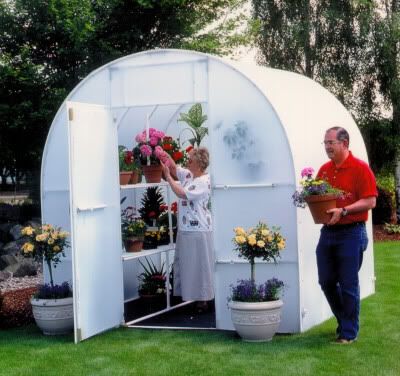It's important to keep your greenhouse clean and tidy to prevent pests and diseases spreading rapidly in the humid and heated conditions. Below are some general maintenance tips.
- Put canes around plants that need support; such as cordon tomatoes and melons, and tie in emerging shoots.
- Prick out, pot on and pinch out plants as needed. Summer pruning and fruit thinning may be required with some plants, such as grape vines.
- Water regularly, making sure that the composts and soils don't dry out.
- Weed around plants and in the beds.
- Make sure that plants are fed as required.
- Put up shade nets in early summer to protect plants from scorching by direct overhead sunlight. Shading washes can also be sprayed onto the outside of the greenhouse and washed off in autumn.
- Some plants prefer high humidity, so splash the floor with water (called 'damping down') each day in the summer or use a hand-held mist sprayer.
- Look out for pests and diseases and treat appropriately. Common pests in warm, humid conditions include aphids, red spider mite and mealy bug. Diseases include mildew and botrytis.
Cold water straight from the tap can shock plant roots in summer. Therefore keep a watering can full of water inside the greenhouse during summer to ensure you have a supply of warmer water.
Another way of raising humidity is to place a tray of water on the floor which will slowly evaporate into the air. To lower humidity, keep vents and windows open in the summer. You may want to invest in automatic vents which open and close according to the temperature. Extractor fans are also useful.
The annual clean
A regular clean will help maintain the structure of your greenhouse, particularly if the frame is made from wood and therefore prone to rotting. Dirty windows affect sunlight levels - less light can lead to seedlings becoming straggly.
The ideal time for cleaning is just before spring sowing as this will remove over-wintering pests and diseases. Early autumn is another good time for a cleanout, just before tender plants are returned to the greenhouse. Avoid tackling your greenhouse during the winter months, as doors, windows and vents will be wide open and plants will need to be moved outside.

